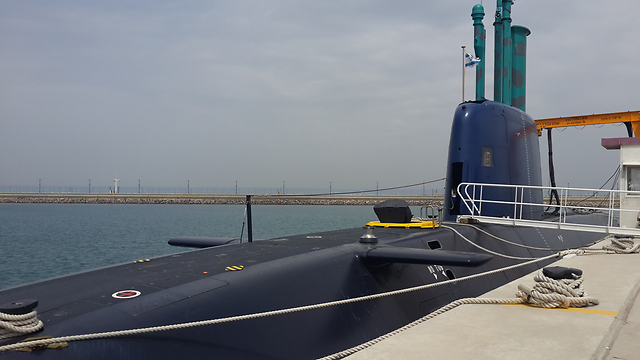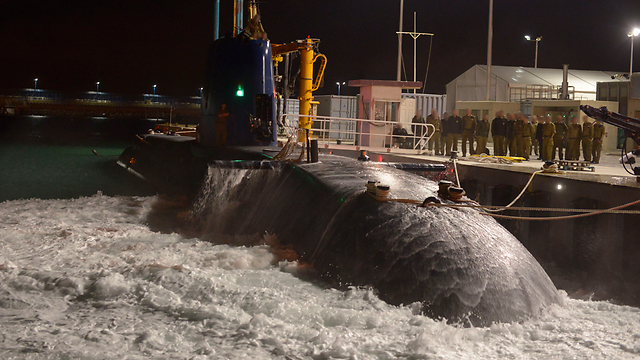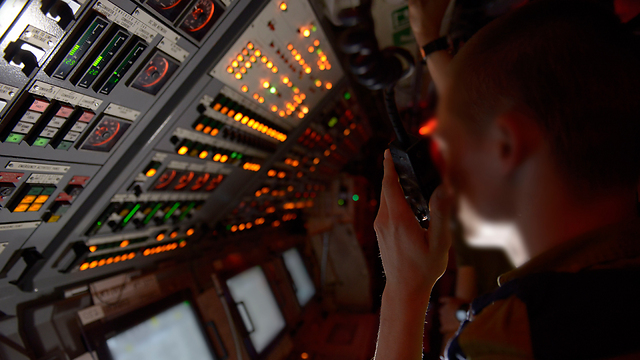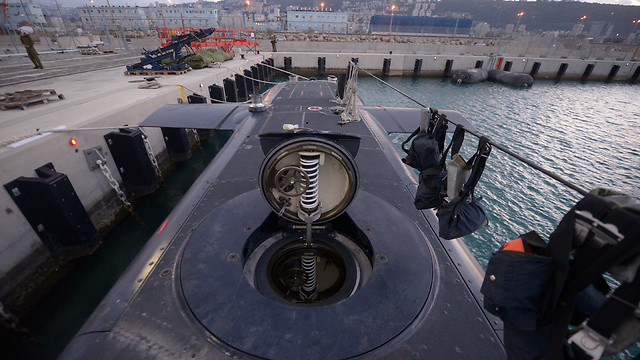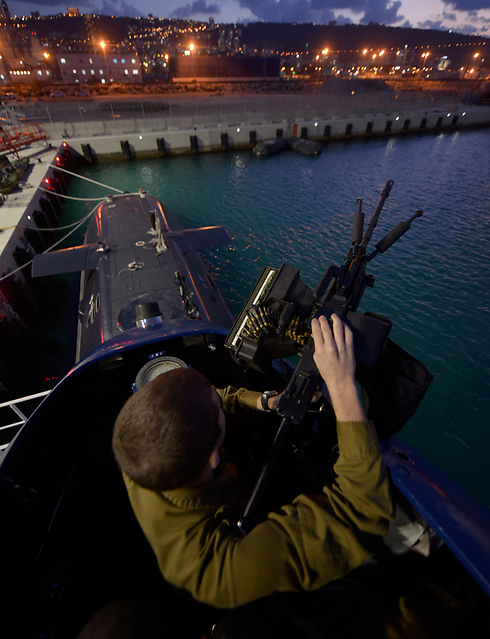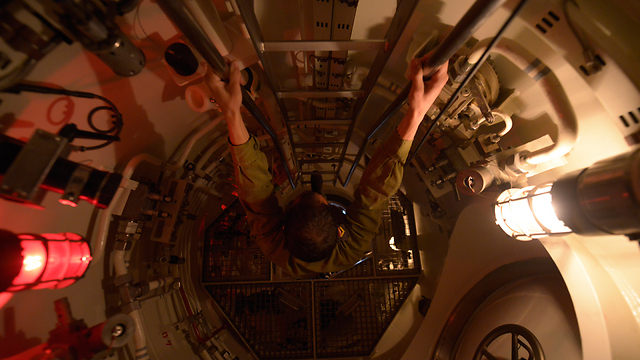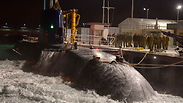
Sneak peek into top-of-the-line IDF submarine
German-made INS Tanin, which has been undergoing intensive modification since arriving in Israel, will soon be ready to undertake its secretive, long-range assignment.
The IDF's newest submarine, the INS Tanin, is expected to set out soon for its debut mission.
Israeli Navy personnel – together with crews from the defense industry – are executing the final sets of tests of the advanced weapons, communications, and intelligence systems added to the sub after its arrival from Germany in September.
According to foreign reports, the newest set of submarines is the strategic arm of the Israeli military, the country's "second strike" force, meant to retaliate against aggressors in the worst case scenario of a nuclear attack.
The technical crews and engineers have been working overtime to assure all systems are synchronized and operating flawlessly on the IDF's most expensive, and secretive, weapon – with a price tag estimated at half a billion dollars.
The most overt difference between the INS Tanin and its three predecessors is its length: 68 meters compared to the veteran subs' 57.3 meters.
The additional compartments have space for fuel cells which allow for quiet electric propulsion for prolonged periods while submersed, as well as a briefing room, a recreation room, and a computer station.
"The add-ons allow the INS Tanin to receive missions with longer durations and further deployments than the existing submarines," says an Israeli Navy officer.
"We prolonged by days its capability to operate quietly and discreetly in enemy territory."
The rest of the communication, weapons, and intelligence equipment installed in the new vessel are also considered highly advanced, but the INS Tanin's advantage in those departments will end when the older subs are retrofitted with the new systems.
However, the technical systems which control and steer the INS Tanin are considerably easier to operate and have a variety of built-in back-ups.
For example, its digital sonar array can more easily identify undersea noises for the operators.
"We are enjoying the benefits of more advanced noise-isolating capabilities and can therefore hear farther," says the officer.
The fifth submarines, the INS Rahav, is identical to the Tanin and will arrive in Israel in the summer, with the sixth vessel to set sail from Germany in the coming years.
The Israeli Navy has identified a significant increase in its number of operations – especially long-range – which its ships have received over the last two years.
"The Tanin has more advanced equipment, among the best in the world," say naval sources.
The navy says that the changing reality in the Middle East has led to, on average. one submarine each month to embark on an unplanned mission, with just a few hours notice.
"We work in cooperation with units from the Ministry of Defense, Military Intelligence, special forces, Air Force and the infantry," says Lt. Col. "G".
The commander of Haifa's naval base, Gen. David Salame, adds: "The submarine flotilla operates deep within deadly enemy, with efficiency and secrecy."
The army predicts that the submarines will continue to perform a variety of tasks, mainly intelligence gathering missions, which could take the vessels thousands of miles from Israel.
'Hezbollah target'
Meanwhile, the IDF has identified a further transfer of advanced weapons from Russia to Syria, as the country enters its fourth year civil war. The navy says that its working assumption is that everything that finds its way into Syria will end up in Hezbollah's possession, including the world's most advanced cruise missile, the Russian Yakhont.
"Up until the Second Lebanon War, Lebanon had one sea-bound missile, the C-802. Based on this assessment, we therefore operated close to the Lebanese coast," says a senior naval officer. "Now, there are now dozens of sea missiles in Lebanon, of at least ten different types."
"The Yakhont is not a surface-to-sea missile, as some mistakenly believe, but a missile launched from the beach that can strike at any point on land within a range of 200-300km," says the source. "We have defense systems such as the Barak 1 and soon the Barak 8 missile that can go up against it."
He says the takeover by global jihad organizations such as Islamic State in the Sinai and Syria has already led to the seizure of an Egyptian missile boat by terrorists from a radical group. He says that Israel's current and future gas rigs will become sitting ducks for Hezbollah.
"From the moment the contract is signed for the purchase of four defense ships, it will take two to three years until they arrive. Until then, we can provide solutions based on existing layers of intelligence, local security, aerial vehicles from a reasonable distance and ships in the area," says the official. During Operation Protective Edge, naval missile boats were deployed at each of the rigs for fear of rocket fire.
Another threat that was considered was the infiltration by Hezbollah terrorists from the sea toward Nahariya and Rosh Hanikra, similar to the attempt by Hamas frogmen from Gaza during last summer's conflict. The navy is currently setting up a system to cover the maritime borders, which will improve the ability any future infiltration attempts by sea.










